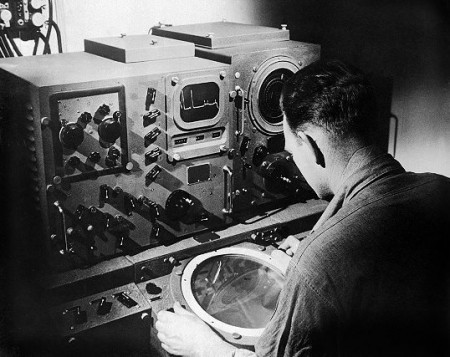Trendspotting is a game we all like to play, and if you’ve been in the news business you’d better be good at it. I’m not anymore (in the news business, I mean) but I like to think that I can still tell when the blip on the radar screen of contemporary wine culture is an ocean liner, a rowboat, or just an oversize jellyfish.

In truth, the skill in spotting trends doesn’t really lie in knowing the difference between the QE2 and a member of the family of the Medusazoa. It’s more a question of how early in the game you can distinguish between the two. In their keenness to be the first to sound an alert the moment fashion seems poised to make a pivot, trendspotters can end up starting a trend instead of flagging one.
Then there’s what I’ll call the wishful thinking trap. You so want to see certain behaviors trend and are so convinced they should trend, that the slightest suggestion that they might be trending engages your attention in an unduly affecting way. I can’t say that in compiling my list of ten trends in wine that should be on your radar screen I’ve not slipped into one of the traps I’ve just described. But as of early 2014, from my vantage point at Central Bottle in Cambridge, here’s how it looks to me. In no particular order . . .
Blip No. 1. A move toward more classically-proportioned red wines. Is it just coincidence that the mania for ever bigger, richer, riper, red wines roughly coincided with baseball’s steroid era? In the last 20 years both distorted classic, historically-consistent proportions into something slightly monstrous. The Bluto-esque physique of home run champ Barry Bonds had its analogue in the artificially pumped-up bodies of red wines too big and too alcoholic to be of use for much of anything but winning blind tastings.
Baseball seems to have solved its performance enhancement problems now with diligent testing, and wine too (more slowly perhaps because there’s no two-vintage suspension hanging over repeat-offenders) seems to be returning to more appropriate levels of ripeness and extraction. I’m looking forward to the day when all red wines have the physical dimensions that correspond to a utility infielder. Play ball!
Blip No. 2. Less recourse to sulfur – where possible. It’s hard to know whether its reduced-sulfur wines that are the trend here or just talk about reduced-sulfur wines, but its pretty clear that minimizing dependence on sulfur has become a major goal among producers determined to diminish processing en route from grapes to wine. This is going to be tricky because low-sulfur and unsulfured wines generally don’t present themselves in a style consumers are accustomed to. In white wines, particularly, they’ll have to expect fruit to retreat in favor of fermentation flavors and aromas, colors to deepen and vary, and texture to be more pronounced. My sense is that younger drinkers are having less trouble with this than their more experienced elders.
Also, it’s not just a question of leaving an ingredient out. Winemakers who have made the transition, or tried to, say that making wine without recourse to sulfur is a different process and it takes time to figure out how it can be accomplished at a given winery.
Blip No. 3. A shift to a higher-acid palate. Blame this one on a new generation of sommeliers who seem almost as obsessed with acidity as with the elusive quality known as minerality. That they are sometimes confused with each other is hardly surprising since they are so often found in the same wines. What somms know is that when it comes to matching food and wine (their Bailiwick, after all) is that acid in your wine is like a squirt of lemon juice on your swordfish, or ketchup on your fries — perking up your taste buds, offering counterpoint, and keeping the appetite on high alert.
Higher acid wines are associated with cooler (and higher) growing regions, hence the recent burst of interest in riesling from German and Austria and lighter-bodied mountain reds from Italy’s sub-alpine vineyards. A taste for livelier, more nimble (and lower alcohol) wines seems already to be putting pressure on California to seek a fresher profile for their wines by planting in cooler regions or, where that isn’t possible, harvesting earlier.

Blip No. 4. A bigger target for food and wine matching. I read recently that the PGA is considering new rules that make the notoriously frustrating game of golf a bit less so for those who play the game recreationally. One idea is to increase the size of the cup from 4.25 inches in diameter to 15 inches, as above. I’ve never played the game, so have no opinion to offer on the advisability of the rule change, but I’m adopting it as a metaphor for what I see as a welcome and reasonable relaxation of standards on the subject of food and wine matching, where the target has long been far too small for those who play the game solely for fun.
Maybe its because we’ve practiced the house pour technique for so many years, but it’s just never seemed that it’s so difficult to pour a wine that goes just fine with what’s on the plate, and it’s my sense that we’re far less alone in this view than we used to be. I put this down to a growing maturity on the part of American wine drinkers who seem to be catching on to what they have seen in their European travels: that in most places and in most situations people drink the local wine, whatever it may be, with most things they eat and think it’s just great. For fancy meals in fancy restos, it’s a different matter. In almost all other situations, choosing a wine that doesn’t actually conflict with a given dish (a reasonable goal) is a short putt into an oversize cup.
Blip No. 5. A rise in prestige for small production, mom and pop winemaking operations. There’s something astonishing about the degree to which rustic chic has overwhelmed brand-consciousness (cf. Blip No. 10) at least among a certain segment of wine consumers. This HAS to be another somm-driven phenomenon, since the mom and pop producer has no way to bring its wine to our attention except via a micro importer hand-selling it to a resto or boutique retailer who in turn introduces it to us.
In such cases the prestige appears to be inversely proportional to the size of the operation. This has two corollaries: (a) that the fewer bottles produced the greater the interest, and (b) the more colorful and appealing the story, the less demanding we are likely to be about the quality of the wine. Sure, there are still plenty of people for whom a recognizable brand from a big name region will always be preferable to a wine from an obscure property in humbler precincts, but for an increasing number of wine enthusiasts, that little-known wine from the small family property for which LVMH will never launch a take-over bid is just what they want to drink. And hurrah for that.
Blips 6-10 next week . . .
Reach me at stephenmeuse@icloud.com